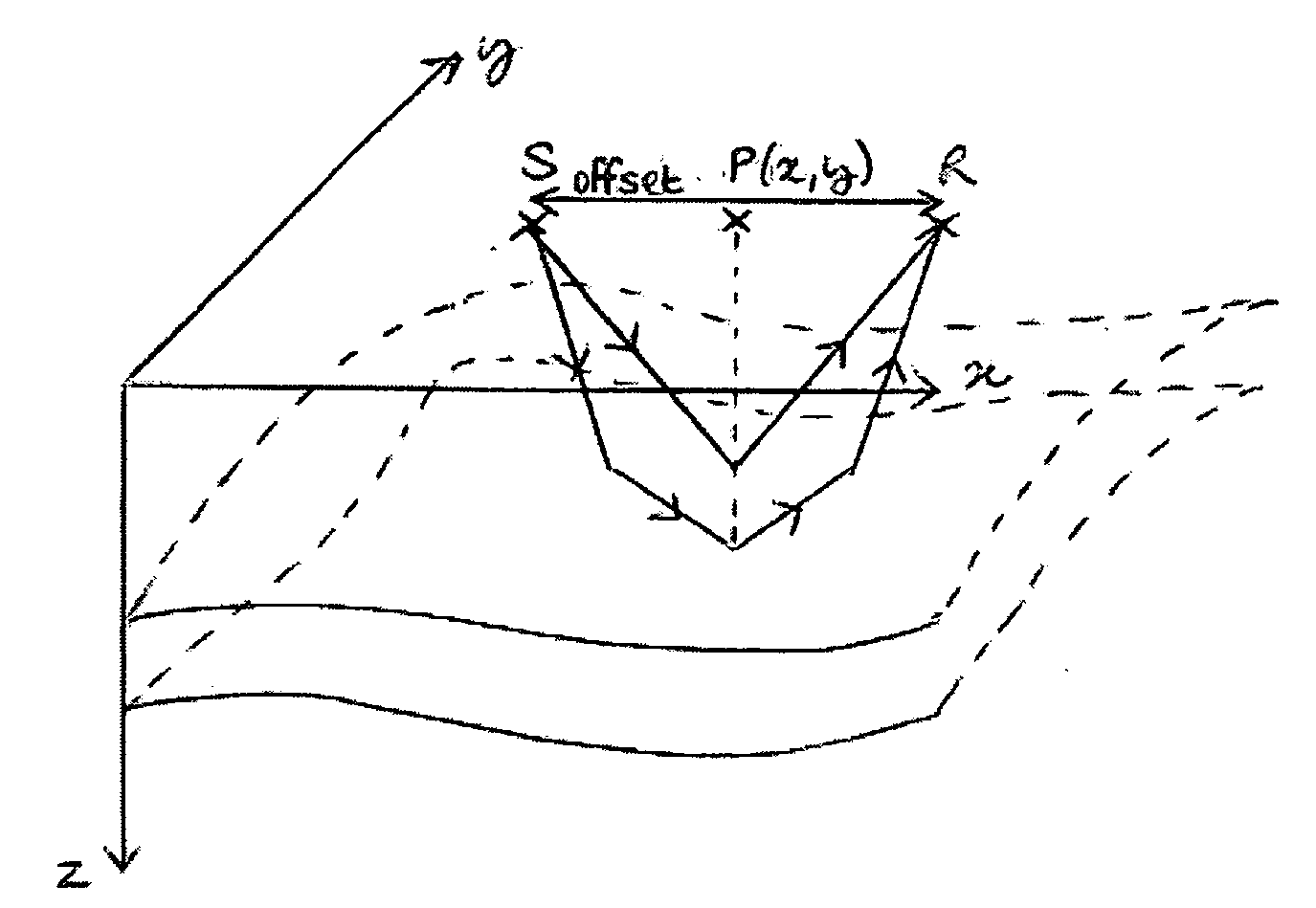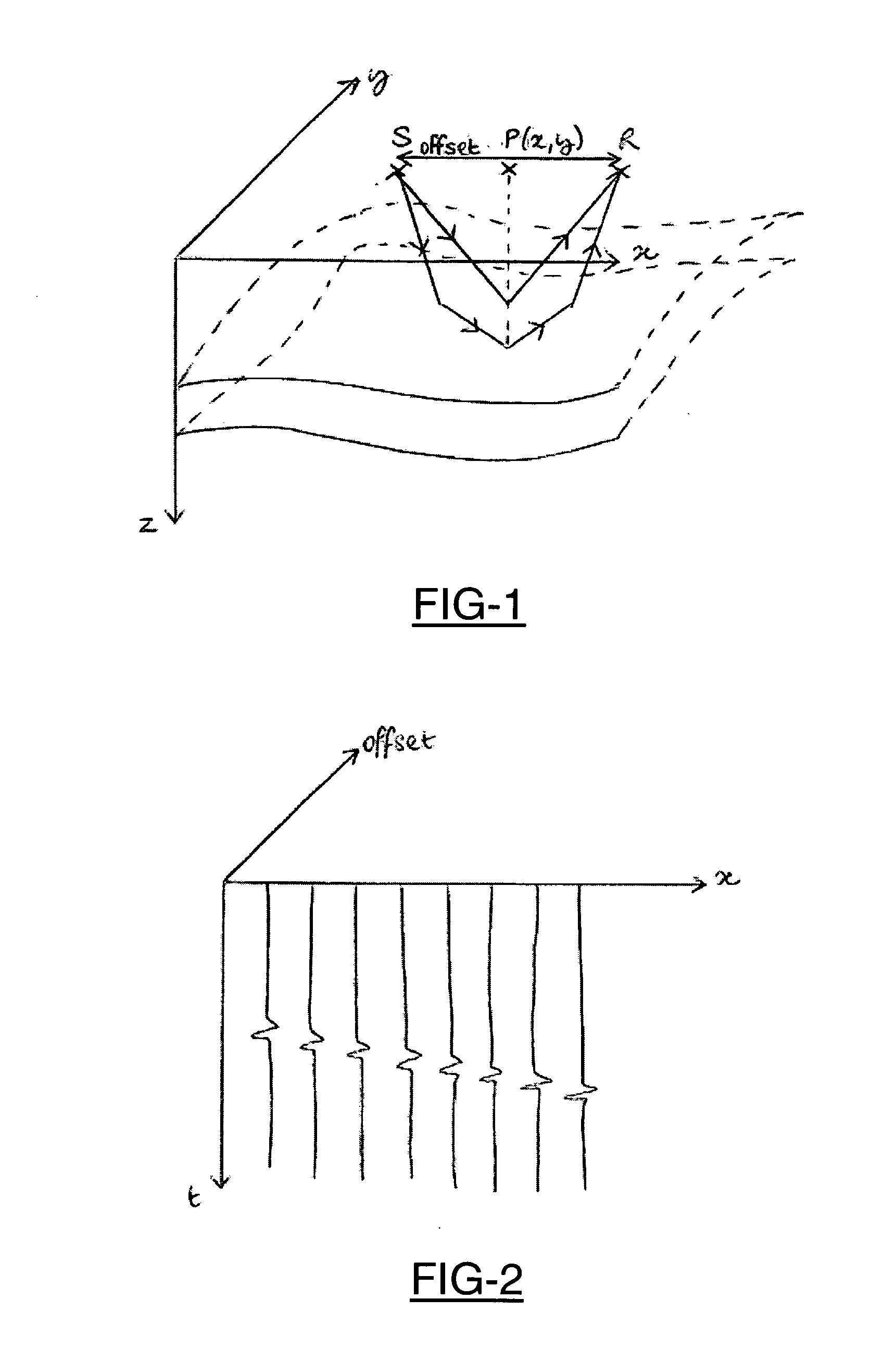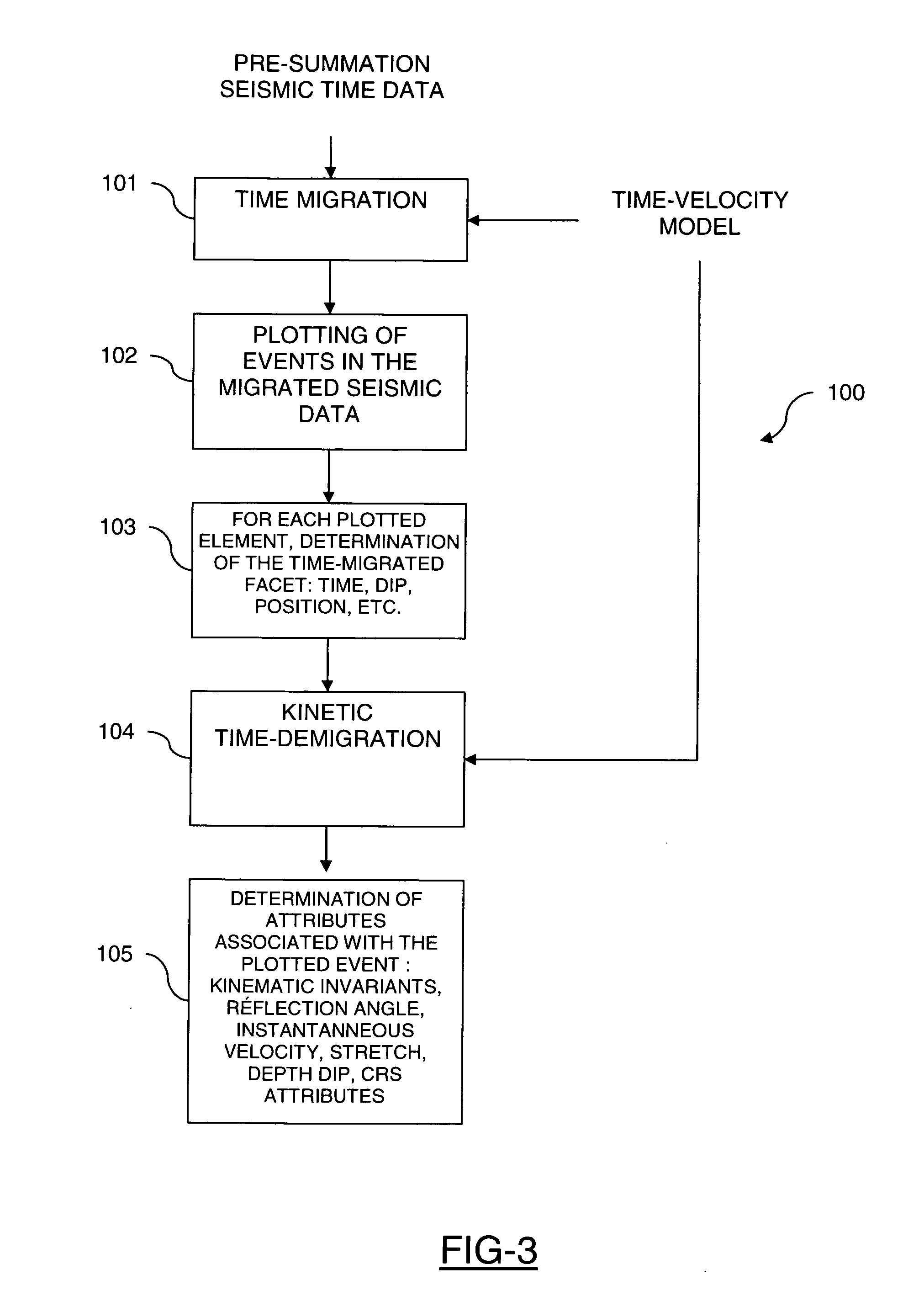Method of seismic data processing
- Summary
- Abstract
- Description
- Claims
- Application Information
AI Technical Summary
Benefits of technology
Problems solved by technology
Method used
Image
Examples
Embodiment Construction
[0046]The seismic data processing process shown in FIGS. 3 and 4 includes two main processing phases: a first phase 100 of constituting kinematic invariants (FIG. 3) and a second phase 200 of tomographic inversion of these kinematic invariants, i.e. an estimation of the time- or depth-velocity model (FIG. 4), on the basis of the kinematic invariants.
Determination of the Kinematic Invariants
[0047]The first phase of the processing process shown in FIG. 3 is applied to time traces before migration. These traces correspond to the recording, as a function of time, by a sensor, of the amplitude of the signal propagated underground.
[0048]According to a first step 101, a migration of these seismic traces is performed according to an initial time-velocity model (PreSTM).
[0049]According to a second step 102, on each gather of traces obtained in the previous step, one or more events reflected in line with the surface point considered are picked.
[0050]FIG. 5 diagrammatically shows a cross-secti...
PUM
 Login to View More
Login to View More Abstract
Description
Claims
Application Information
 Login to View More
Login to View More - R&D
- Intellectual Property
- Life Sciences
- Materials
- Tech Scout
- Unparalleled Data Quality
- Higher Quality Content
- 60% Fewer Hallucinations
Browse by: Latest US Patents, China's latest patents, Technical Efficacy Thesaurus, Application Domain, Technology Topic, Popular Technical Reports.
© 2025 PatSnap. All rights reserved.Legal|Privacy policy|Modern Slavery Act Transparency Statement|Sitemap|About US| Contact US: help@patsnap.com



